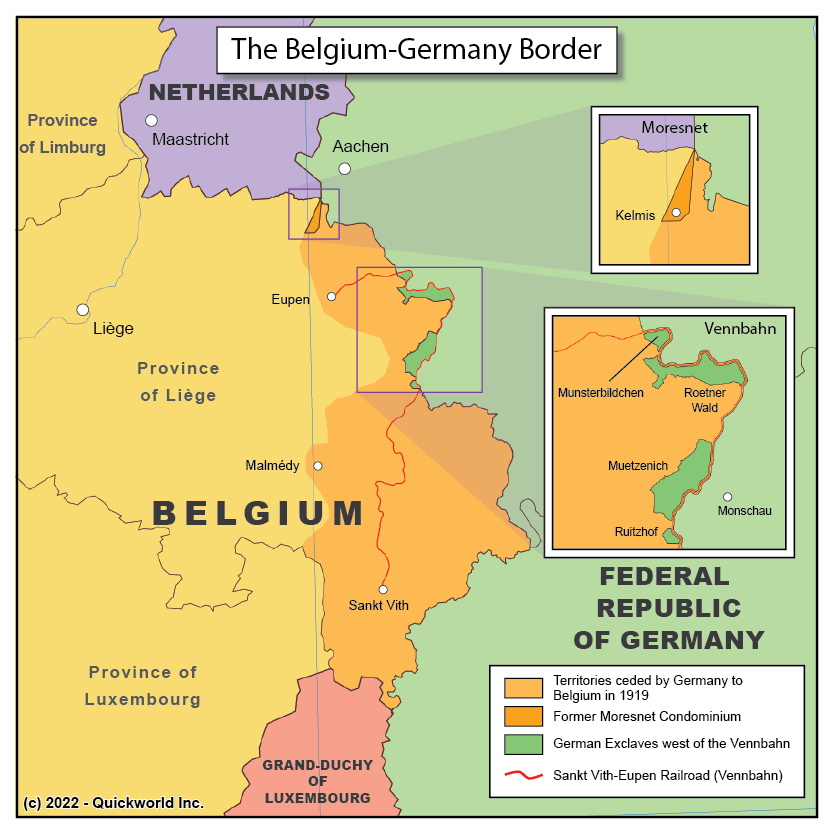Our series on Geographic Oddities takes us to the border between Belgium and Germany, a much storied region that changed hands many times in modern history.
The presence of a tiny French-speaking population around the town of Malmédy in the Prussian Rhineland, as well as the demand for reparations from Belgium after WW1, resulted in the transfer of a small territory from Germany to Belgium in 1919.
The region was already host to an oddity, as a coal mine on the border between Belgium and Prussia had been deemed to be under joint administration, and the small territory around it, known as the Moresnet Condominium, basically acted like an independent micro-state for about a century. Moresnet was part of the territory transferred to Belgium. So were the towns of Eupen and Sankt-Vith, two places that were on the railroad that linked the city of Aachen to the North to the city of Luxembourg to the South.
As the central portion of the line linked two Belgian towns, the sovereignty of the railroad, known as the "Vennbahn", was deemed to be Belgian, even though it went through German territory. This created a linear strip of land, barely 100m wide, which separated five small exclaves from German territory. With the closing of the rail line and the suppression of closed borders between countries, the Vennbahn has become a bike path used by citizens of both countries, but remains on paper as one of the World's border oddities.
The Vennbahn


